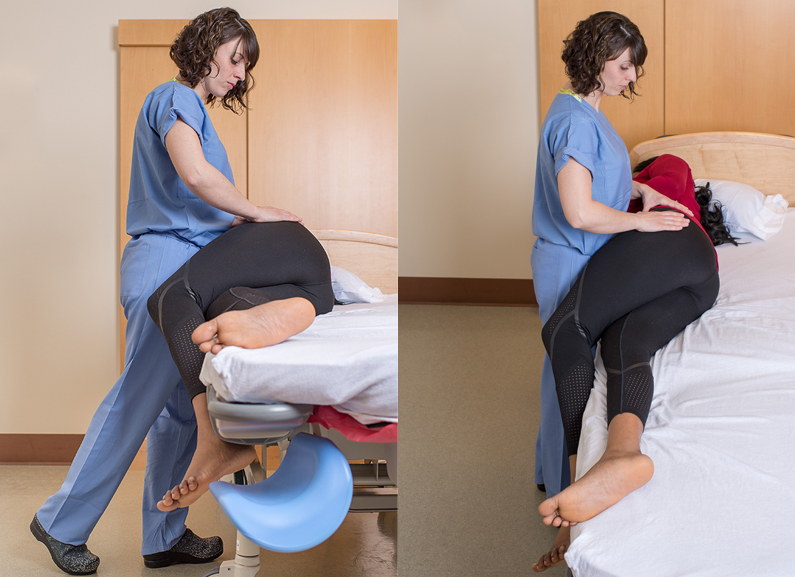I’m often finding myself self-tightening when I hear my colleague say “stretch the ligament.” But my reaction is not logical. Just five minutes before I’ve said the same thing: Stretch! So why the visceral reaction to the word stretch? While saying it, I know I’m describing a physio-neurological response that will lengthen the muscle fibers of the ligament. But while hearing the words, “stretch the ligament,” I still picture an image of pulling an elastic band beyond its recoil and leaving it limp and ineffective. Oh dear! Is anyone else having a similar response to think stretch means weakening? Come with me and help me take another look at what stretch does and Spinning Babies recommended stretches. Let’s all know the meaning of such comments as: “Forward-leaning Inversion stretches the cervical ligaments” “Sidelying Release stretches the pelvic floor and other pelvic muscles, like the piriformis.” 
Spinning Babies® Recommended Stretches
There are two kinds of stretches that are recommended at Spinning Babies: the dynamic stretch and the static stretch. Dynamic stretch maintains current levels of balance in the body and enhances our range of joint motion and muscle movement comfort. Static stretch means we stretch a limb, for instance, and hold it or let it hang for 30-45 seconds as the brain receives a message and returns a signal to lengthen the muscle fiber for a short period of time.
Spinning Babies Provides Instruction
The dynamic stretch is in the Daily Essentials’ two 28-minute yoga routines (video download). Our way of using recommended exercises we show online could be easily adapted into a dynamic stretch routine for creative users of our pregnancy page Daily Activities.
Our static stretch routine is expressed through two of our techniques in our body balancing routine, Three Sisters of Balance℠. Forward-leaning Inversion and Sidelying Release are two static stretches that we see plenty of anecdotal evidence that muscles are lengthened for a period of about two hours. During this time we find spontaneous rotation and descent occurring. If not, we find a window of opportunity to open the pelvic diameter where baby has been waiting if used in a long labor, and more success with specific matched birth positions to the needs of that baby for rotation and/or descent.
Share a Little Physiology Today!
We are going for a revolution of physiology and we need your help. Share a little physiology today by sharing this post! Here’s how you can help:
- Forward our email to colleagues
- Share this blog post on your social media accounts
- Invite your colleagues to take a Spinning Babies® Workshop
- Arrange a Spinning Babies® Workshop at your hospital
Thank you for doing what you do and helping spread the word!
References
Is Dynamic Stretching Better Than Static Stretching? The Research Reviewed
Dynamic Body Balancing – Craniosacral and Myofascial Unwinding
Spinning Babies Daily Activities
Spinning Babies Weekly Activities
Daily Essentials Video Digital Download
